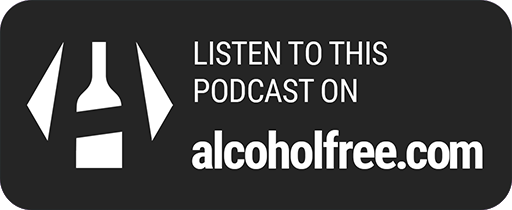Marshall Poe

Marshall Poe
Pharmacological Histories Ep. 1: Nancy D. Campbell on Naloxone
Pharmacological Histories Ep. 1: Nancy D. Campbell on Naloxone
Pharmacological Histories Ep. 1: Nancy D. Campbell on Naloxone
Monday 8th May 2023
Join Nancy D. Campbell as she reveals naloxone's transformation from a hidden remedy to a life-saving tool in overdose prevention.
43 minutes
Informative
Empowering
Inspiring
Thought-provoking
Transformative
About this podcast
Author:
Marshall Poe
Overview:
Categories:
Understanding Addiction & Recovery
Navigating Alcohol Dependency
Navigating Intimate Relationships
Family Recovery from Addiction
Relationships & Community
Links:
Visit site
Episodes:
259 (View all)

Do you want to link to this podcast?
Get the buttons here!Naloxone's Journey: From Dark Alleys to Life-Saving Kits
Episode Overview
- Naloxone's mechanism of action and significance in overdose reversal
- Evolution of naloxone from a medical tool to a vital aspect of harm reduction
- The social, political, and legal complexities surrounding naloxone
- Insights into the intersecting dynamics of drug policy, addiction, and recovery activism
- Exploration of harm reduction practices and their impact on societal trust and solidarity
Naloxone is a technological fix, it doesn't work at all unless you have an opioid in your system. It's largely inert, unless you have an opioid sitting on the receptors in your brain. And so naloxone is called a narcotic antagonist. It's a really interesting drug and medicine. Its complexities, of course, are social, political, legal. It's an essential medicine, yet it's treated as if it's illegal in a lot of places. And so it's a really interesting drug and medicine.
Imagine a world where a single drug can mean the difference between life and death. That's the reality explored in this episode of 'Pharmacological Histories', where Nancy D. Campbell dives deep into the story of naloxone. Once shrouded in the shadows of society's most neglected corners, naloxone has emerged as a beacon of hope in the fight against drug overdoses.
Through interviews with advocates, drug users, and medical professionals, Campbell paints a vivid picture of how naloxone transitioned from a niche medical tool to a cornerstone of harm reduction strategies. She discusses its role in reshaping laws, policies, and even public perceptions about drug use and recovery.
If you're curious about how a small vial of naloxone can turn the tide in the overdose crisis, or if you want to understand the social and political battles fought to make it accessible, this episode is for you. It's not just about a drug; it's about a movement that has saved countless lives and continues to push for change.
